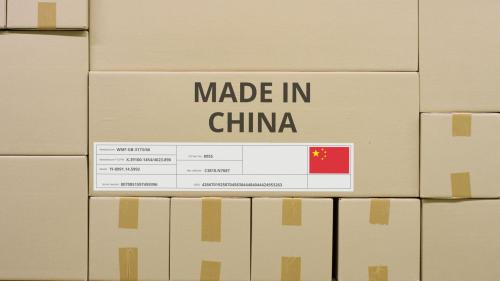Editor’s Note: In this piece from the South Asia Hand, Teresita Schaffer analyzes the agreement reached by the U.S. and India on how to end their four-month standoff in the World Trade Organization (WTO) over the issue of India’s agricultural stockpiles for its food security program. Teresita Schaffer is working on a book called India at the International High Table, co-authored with Howard Schaffer, which will examine how India sees its role in the world—including the different foreign policy visions of different political figures—and how this translates into India’s negotiating style. The United States and India have historically had a difficult time working together in multilateral institutions, and this dispute illustrates how India’s resort to brinkmanship has played out in its relations with the United States and the WTO.
The announcement on November 13 that India and the United States had agreed on a potential resolution of the dispute that threatened the future of the World Trade Organization was very welcome indeed. One of the comments that appeared on Twitter soon after the announcement was succinct: “Champagne?” The real answer is: no – a nice cup of tea would be more fitting. It will take some work to reverse the damaging impact of the four-month standoff that preceded it, and avoid a repeat.
The roots of this dispute go back about a year. During the December 13 meeting of the WTO, the assembled trade ministers with some difficulty reached agreement to formally present to the organization’s membership an agreement with two principal features. One, the Trade Facilitation Agreement (TFA), considered in Washington to be uncontroversial, would provide for all members to simplify their customs and other procedures that affect goods crossing borders. The other, which was the subject of passionate disagreement, especially between the United States and India, provided for limits on agricultural stockpiles maintained for food security. This provision included a special exception for developing countries: their subsidies would not be challenged for four years, during which WTO members would work out a permanent solution to the problem of food stockpiles and the associated stockpiles. The issue was hugely important for India, given the large number of people dependent on the government’s distribution program. India agreed, and ministers approved the agreement, which was to be formally ratified by the members in July. Under WTO rules, it needed consensus to pass.
In late July 2014, India – now under a new government headed by Narendra Modi – said it would not agree. It argued that since insufficient progress had been made toward a permanent solution, it was no longer willing to allow the Trade Facilitation agreement to pass unless its concerns about agricultural stockpiles were addressed. From Washington’s perspective, India was going back on an agreement it had accepted. From Delhi’s standpoint, the TFA was the best leverage they would have, so they decided to take a stand on that. Indian officials also noted that there had been no forward movement in the intervening seven months – though there was no timetable for starting action in the original agreement. India had practically no support from other WTO members for this move. The issue was taken up by the Indian cabinet, which decided to hang tough.
India’s action went down badly in much of the world, but especially in Washington, where the enthusiastic reaction to India’s new, business-friendly government turned to anxiety about what seemed a very destructive Indian approach to one of the world’s most important multilateral organizations. Prime Minister Modi publicly defended his country’s hard line when he visited the United States, always noting that India supported the TFA.
Efforts went on behind the scenes at WTO headquarters in Geneva to find a way through the problem. These eventually bore fruit. Agreement came on the margins of a meeting of two East Asia-centered organizations in Myanmar, attended by both President Obama and Prime Minister Modi. It largely restates the origianal agreement, but with the important change that instead of a four year “peace clause” on agricultural stockpiling, there is no deadline, and the agreement not to challenge India’s subsidies will last until a permanent solution is found.
The United States and India have for decades had more difficult relations in multilateral organizations than in their bilateral dealings, and trade has been among the most difficult areas. For both countries, trade is fundamentally a domestic subject, and domestic politics heavily influence the way the address trade agreements. Indian ministers have chafed at the impatience of their American counterparts, and at U.S. unwillingness to discuss Indian concerns that fall outside of trade – such as the ever important issue of work visas. U.S. negotiators and ministers have been frustrated by India’s propensity for taking rigid stands – they still smart in remembering Kamal Nath’s statement to the WTO in 2008, “I reject everything.” Both practices reflect the different constraints in the two systems. For the United States, the Constitution gives all responsibility for trade to the Congress, so negotiators can implement nothing unless it is enacted into law. For an Indian politician, it is much easier to return from negotiations having tenaciously insisted on India’s preferred outcome than to step off the plane having achieved half a loaf.
This disagreement has left bruises. With a little luck and some sensitive handling, however, these will heal, and the way may now be open for new advances in teh India-U.S. economic relationship.
But this experience suggests that India’s relations with the WTO and with Washington are still vulnerable to turbulence.
First, India and the United States apparently look on the WTO differently. Washington sees the WTO as an essential part of the rules-based international economic system, and takes unkindly to what felt like Indian willingness to blow it up. For India, and specifically for this government, the need for an institutional home for trade is less important. This problem is magnified by the fact that India historically has not seen much advantage to itself in successful trade negotiations – and hence sees little cost to allowing them to fail.
Second, India and the United States are likely to draw different lessons from this episode. India, with a long history of brinkmanship in trade negotiations, may conclude that the agreement ultimately vindicates this tactic. That is correct only if India is also prepared to live with a sour and hostile relationship with Washington in the trade arena. With India’s trade expanding, this may become a more expensive price to pay.
Third, this time at least, the damage may have extended beyond the United States. Only three of the 160 WTO members stood by India’s refusal to approve the TFA in July. Some of the other countries India normally counts on, both bilaterally and multilaterally, stayed aloof or were really troubled by India’s tactics. A case in point is Brazil; the director general of WTO, Robert Azevedo, is Brazilian, and was left with the uncomfortable task of trying to pick up the pieces.
The new proposal still needs to be approved by the full WTO membership. This seems likely. After that – fence mending? gloating? sulking? So – a cup of soothing tea, but save the champagne until later.
The Brookings Institution is committed to quality, independence, and impact.
We are supported by a diverse array of funders. In line with our values and policies, each Brookings publication represents the sole views of its author(s).


Commentary
Op-edIndia and the WTO—A Reprieve
November 14, 2014